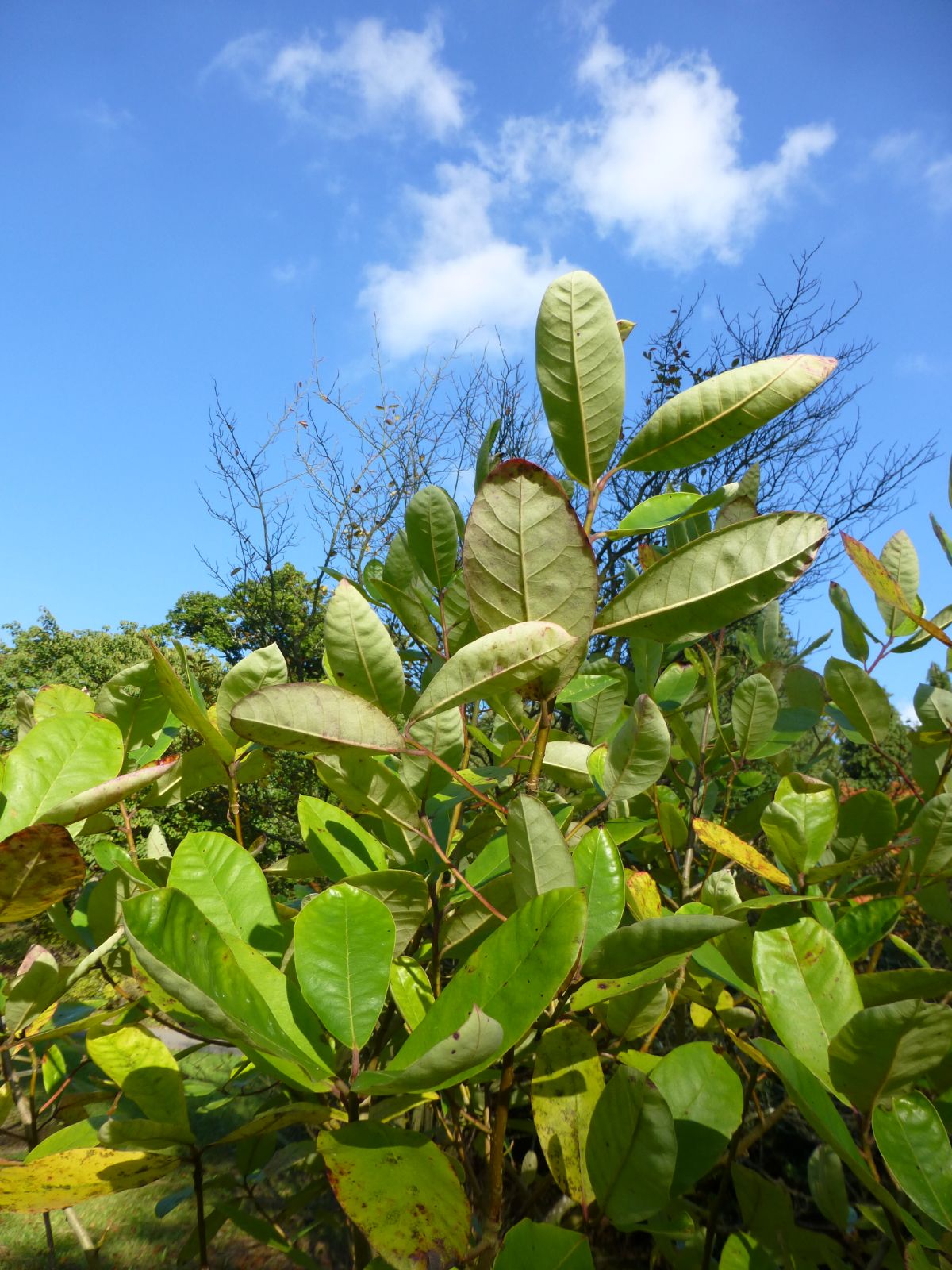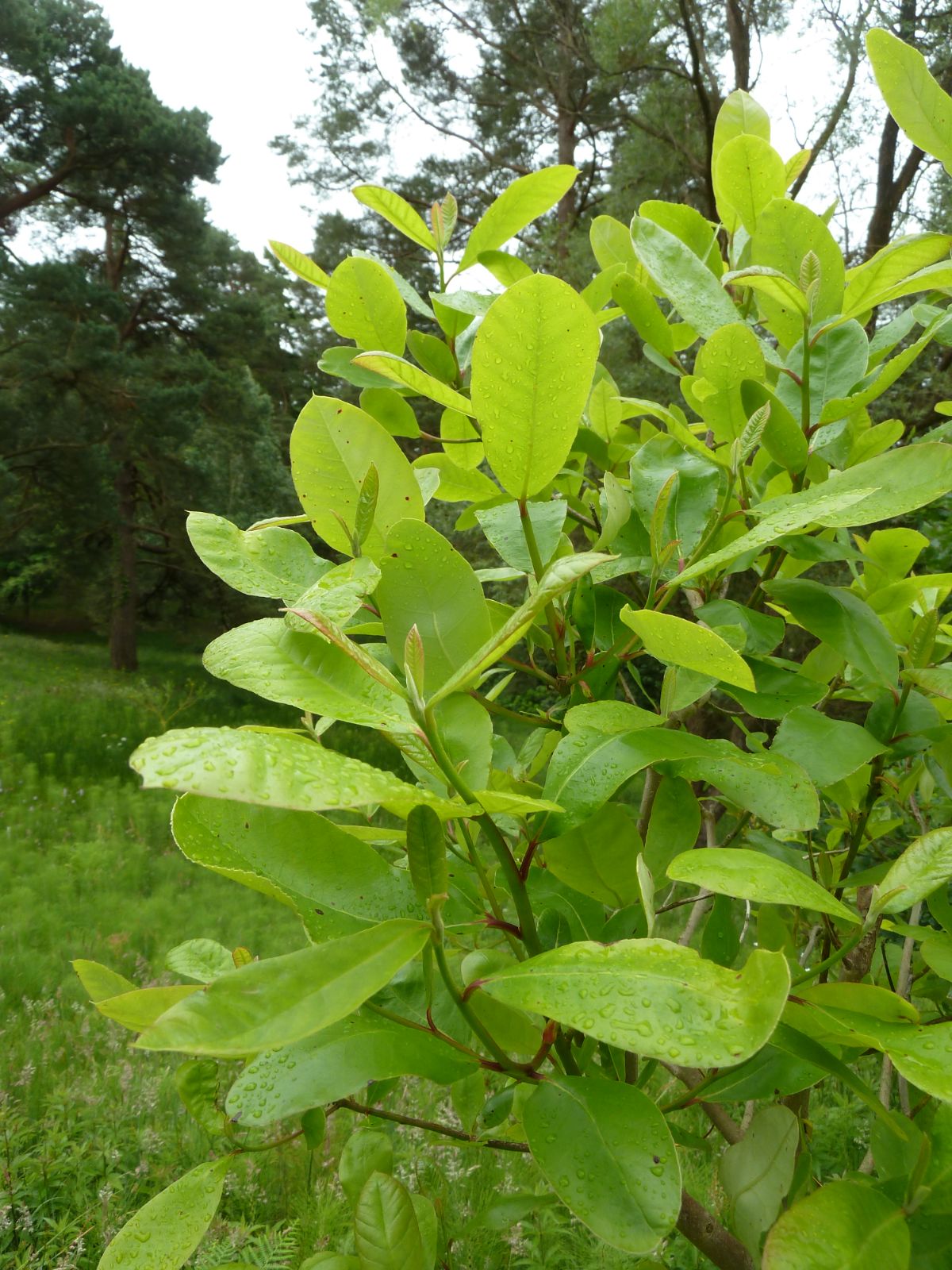Nyssa ogeche
Sponsor
Kindly sponsored by a member of the International Dendrology Society.
Credits
Owen Johnson (2021)
Recommended citation
Johnson, O. (2021), 'Nyssa ogeche' from the website Trees and Shrubs Online (treesandshrubsonline.
Genus
Common Names
- Ogeechee Lime
- Ogeechee Tupelo
Tree to 30 m, but often much smaller; typically multi-stemmed from 1–6 m above a massively swollen base; crown irregular. Bark grey brown, deeply but irregularly fissured. Shoots grey brown, puberulent; buds reddish, short. Leaves elliptic to narrowly obovate, 5–12(–18) × 3–5(–8) cm, base cuneate to rounded, apex acute to obtuse, margin often recurved, entire or rarely with a few coarse teeth; glabrous above, glabrous or puberulent beneath; petiole short, 6–20(–35) mm. Inflorescence on a densely hairy peduncle 15–20 mm long; male inflorescence with 2–5 (rarely 1) flowers, female and bisexual inflorescences with 1 or 2 flowers. Staminate pedicels absent. Ovary hairy. Fruit with a smooth surface, yellow, orange, brownish or red and not glaucous, oblong-ellipsoid, 2.2–2.8 cm long; stone 1.8–2 cm, with rough, papery-winged longitudinal ridges. (Flora of North America 2021; Grimshaw & Bayton 2009).
Distribution United States Alabama, Florida, Georgia, South Carolina
Habitat Stream banks, swamps and moist woods, below 100 m asl.
USDA Hardiness Zone 7a
Nyssa ogeche has a more restricted and southerly distribution than its fellow swamp specialists, N. aquatica and N. biflora, being confined to a zone about 400 km wide centred on northern Florida and southern Georgia; unlike those species, it tends to be low and multi-stemmed and is the least showy Nyssa in autumn (Dirr 2009). However, it is a more economically important tree: tupelo honey is made by bees foraging from this species’s nectar, and thousands of hectares of plantation have been made around the swamps in Florida where the tree grows wild (Flora of North America 2021); the bees live in special floating hives (Exbury Garden 2021). The large, juicy fruit (‘ogeechee lime’) is also used as a lime-juice substitute and in preserves, but, like that of the other Nyssa species, it is really too acidic to be eaten raw (Plants for a Future 2021).
Some (sources) suggest that Nyssa ogeche was introduced to Europe as early as 1806, but, in the cooler summers of the United Kingdom, it has never flourished and may never have been planted in periodically inundated ground resembling its natural habitat. One plant survives in the National Collection at Exbury in Hampshire (Exbury Garden 2021); Tim Whiteley’s specimen at Evenley Wood Garden in Northamptonshire was 1.8 m tall in 2014 and, having retrenched and been cut back, it was regrowing weakly (Tree Register 2021). The species has flourished somewhat better in the warmer summers of the Arboretum de Balaine in central France (Andrews 2001). It is sold in the United Kingdom by Junkers Nursery, and in France by Pépinières Arboretum Adeline; seed is also available in Australia.
In its native United States, N. ogeche is hardly ever grown for ornament; it is a messy tree in fruit (Dirr 2009). Planted in the National Arboretum in Washington, DC, it successfully ripens its ogeechee limes, and it is hardy as far north as Pennsylvania (Andrews 2001).



